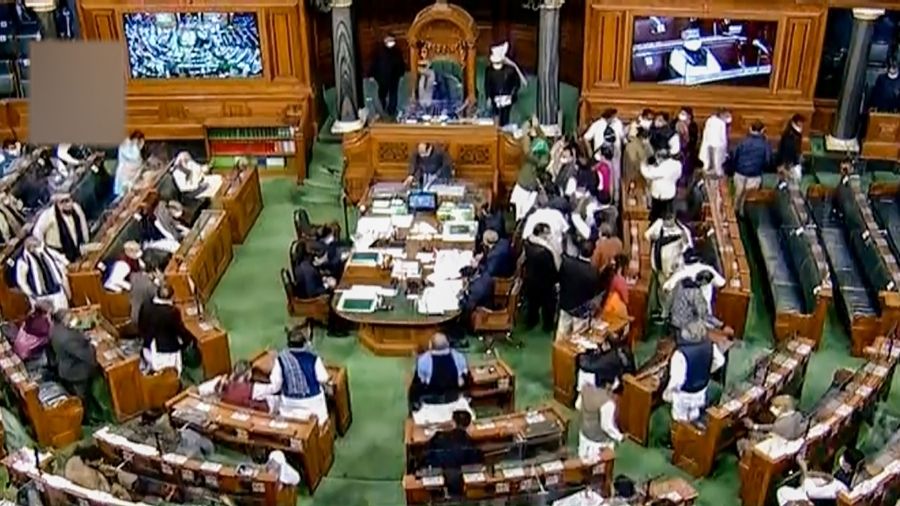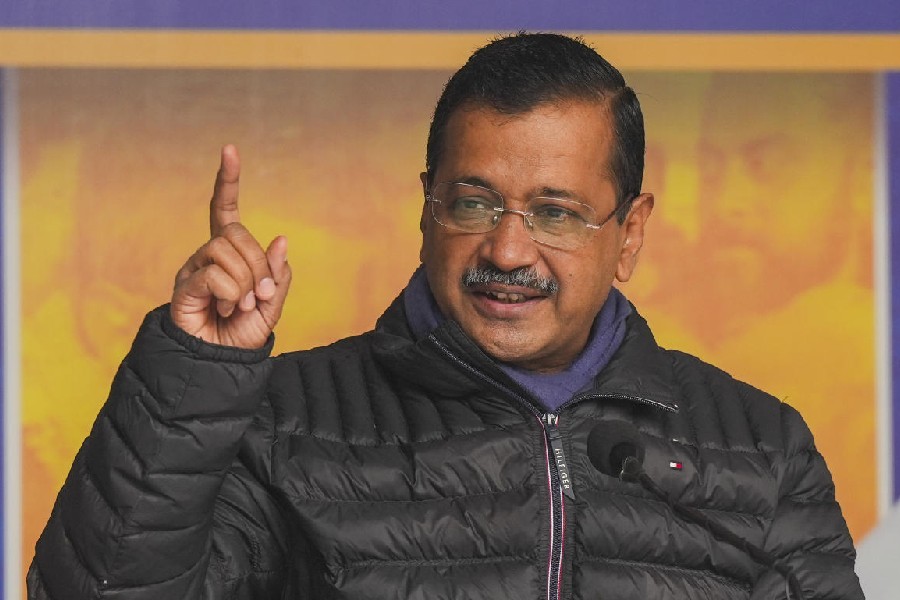India’s coronavirus-battered economy will grow by 11 per cent in the financial year beginning in April, fired up by a mega-vaccine rollout and rebounding consumer demand, forecasts the Economic Survey tabled in Parliament on Friday.
As impressive, though, as the headline growth number looks in the survey it is key to remember the projected double-digit expansion comes off an extremely low base. India’s growth rate is estimated to have contracted an estimated 7.7 per cent in the current financial year due to the pandemic, said the survey, a snapshot of the government’s annual pre-budget economy.
India’s Covid lockdown at the end of March decimated businesses and wiped out jobs, resulting in the economy shrinking an unprecedented 23.9 per cent in the June quarter from a year earlier. Recovery began in the second quarter. But growth remained in negative territory throughout 2020. The massive contraction in output means that it will take time for the economy to recover ground lost in the pandemic.
The survey forecasts India’s growth will slow to trend levels of 6.5 per cent in 2022-23. “This path would entail a growth in real GDP by 2.4 per cent over the absolute level of 2019-20, implying that the economy would take two years to reach and go past the pre-pandemic level,” the survey said. Even looking out to 2025, India will still fall short of achieving 6 per cent to 7 per cent expansion in actual terms if we use the pre-pandemic 2019-20 economic output as a base, the International Monetary Fund says.
The government uses the survey data to draft the budget to be announced by Finance Minister Nirmala Sitharaman on Monday. The survey’s growth projections broadly echo the IMF’s prediction of 11.5 per cent growth for India in 2021-22 and 6.8 per cent the following year. “The rebound will be led by the low base and continued normalisation in economic activities as the rollout of Covid-19 vaccines gathers traction,” the survey said.
India’s growth for the next two years would allow the country to reclaim its title as the world’s fastest-expanding major economy ahead of China, whose expansion the IMF pegs at 8.1 per cent in 2021 and 5.6 the following year. China returned to its pre-pandemic projected output level in the fourth quarter of 2020, ahead of all large economies.
India’s ambitious vaccination programme will curb the pandemic and a more benign inflation climate should allow the central bank to lower interest rates which would spur investment and business activity, the Economic Survey says.
Through the “early, intense” lockdown, India “benefited from successfully pushing the peak of the pandemic curve to (last) September," said Chief Economic Advisor Krishnamurthy Subramanian.
Nominal economic growth, which indicates inflation for next year of 4.4 per cent, is pegged at 15.4 per cent for 2021-22.
“Agriculture has remained the silver lining while contact-based services, manufacturing, and construction have been hit the hardest by the pandemic. Government consumption and net exports have cushioned the growth from diving further,” said Subramanian.
But “with the economy’s returning to normalcy brought closer by the initiation of a mega-vaccination drive, hopes of a robust recovery in the services sector, consumption, and investment have been rekindled,” the survey said.
At the same time, the survey said that the government will have to maintain an “expansionary” fiscal policy to support economic recovery. In other words, this means the government is going to miss its fiscal deficit target -- and by a wide margin. The government’s fiscal deficit for the financial year 2020-21 is projected at 6.5-7.5 per cent, way beyond the budget estimate of 3.5 per cent. Economists project a fiscal deficit target of around 5.5 per cent for the next fiscal year.
IMF Chief Economist Gita Gopinath said the IMF hiked its 2021 forecast by 2.7 percentage points from its estimate issued in October on the back of an unexpectedly strong economic pickup which started the second half of 2020. Boosting India’s outlook is the fact the country has not faced a strong second and third wave of the pandemic as experienced in other countries, she said.
According to the IMF, the US economy will expand by 5.1 per cent in 2021, driven by strong second-half momentum and a $900-billion relief scheme. US President Joe Biden is also looking for Congressional approval for a further $1.9 trillion in assistance.
The IMF revised up its 2021 forecast for growth in Japan to 3.1 per cent from 2.3 per cent in October on the back of an over $700 billion Japanese stimulus plan. But due to the pandemic’s resurgence in Europe, it cut its euro-area forecast by a percentage point to 4.2 per cent. The IMF also lowered the UK’s projected expansion to 4.5 per cent, a drop of almost 1.5 percentage points.
Still, overall, the IMF sees a much rosier outlook for the world economy than it did a few months ago, thanks to multiple vaccine approvals and the start of vaccination programs in many nations as well as the fiscal stimulus by many large countries. “Multiple vaccines have seen unexpectedly strong success and some countries have started ambitious vaccination drives,” Gopinath.
The global economy is estimated to have shrunk by 3.9 per cent in 2020, nearly a full percentage point less than the IMF projected in October, but that would still be the worst peacetime contraction since the 1930s Great Depression. Growth will jump by 5.5 per cent in 2021, buttressed by strong US output, the IMF said.
At the same time, Gopinath warned the global economy continues to face “tremendous uncertainty” and overall global output will be far below economic forecasts made before the outbreak of the devastating pandemic.
In just three months since October, “deaths have doubled to over two million, as new waves have lifted infections past previous peaks in many countries,” said Gopinath. “Much now depends on the outcome of this race between a mutating virus and vaccines to end the pandemic and on the ability of (government) policies to provide effective support until that happens,” she added.
Also, “because of the partial nature of the rebound, over 150 economies are expected to have per-capita incomes below their 2019 levels in 2021,” Gopinath said. That number declines only modestly to around 110 economies in 2022. “At $22 trillion, the projected cumulative output loss over 2020–2025 relative to the pre-pandemic projected levels remains substantial,” she said.











